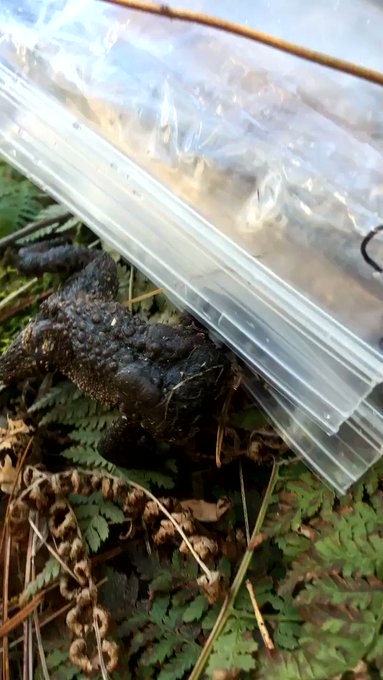CLICK ON THIS LINK TO WATCH THE VIDEO OF THE FACELESS AMERICAN
TOAD
https://www.earthtouchnews.com/wtf/wtf/the-curious-case-of-the-faceless-toad
The curious case of the faceless toad
The curious case of the faceless toad
BY Ian Dickenson MARCH 07, 2018In April 2016, herpetologist Jill Fleming and her colleagues were collecting data on Eastern red-spotted newts in a Connecticut state forest when they stumbled across a truly bizarre find: a toad without a face.
The researchers were seated on a log processing the day’s samples when a seemingly disoriented toad repeatedly crashed into their feet. Puzzled by the amphibian’s unusual behaviour, the team took a closer look and was surprised to discover that the animal was entirely lacking a nose, eyes, jaws and a tongue. In place of a face, the fully grown American toad (Anaxyrus americanus) had only a smooth stump and a small mouth opening. The rest of its body, however, appeared perfectly healthy.
“My initial thought, which I still believe is a likely explanation, was that the extensive injury was inflicted by one of the toad’s many natural predators during hibernation (for example, garter snakes or American mink),” Fleming explained to National Geographic. “For whatever reason, the predator did not finish the job and the toad was able to become active again on that early spring day – amphibians are incredibly resilient.”
Fleming recently shared photos and a video of the toad on Twitter hoping the online science community could shed some light on what may have caused the unusual condition. Some herpetologists pointed to the flesh-eating larvae of a parasitic toad fly called Lucilia bufonivora. The flies have a nasty habit of eating the soft tissues of toads – a grisly process that begins when an adult fly lays its larvae in an amphibian’s eyes or nostrils. Once the eggs have hatched, it takes just two or three days for the larvae to cause extensive damage to the toad’s face, wildlife veterinarian Lydia Franklinos explained to Live Science. Facial tissue is gobbled up so rapidly that the rest of the toad’s body appears relatively healthy as the animal would not have yet begun to exhibit signs of malnutrition.
This toad, however, had no visible wounds suggesting - as Fleming suspects - that an opportunistic predator may have gnawed at the animal’s face while it was in brumation – a hibernation-like state that cold-blooded animals enter into to survive icy weather. In very cold conditions, American toads will burrow underground below the frost line, slow their heart rate, stop breathing and wait until temperatures climb above freezing again. It’s possible that the toad left its face more exposed than the rest of its body and suffered the grim consequences.
While some have suggested that the condition may be the result of a genetic defect, Fleming is doubtful. The toad lacked much of the anatomy necessary for feeding, so it seems highly unlikely that it would have reached adulthood while suffering its faceless affliction.
Injuries like this are rarely witnessed by herpetologists, although they are not unheard of. “Turtles can come out of hibernation with an injury as severe as a missing limb – their hardy shell protects their vital organs and many of them do just fine,” Fleming told National Geographic. “But I have never seen anything with a head injury this severe still capable of getting around like this toad was.”
It’s unlikely that the tale of the faceless toad had a happy ending. Although it’s possible for animals to survive and carry out basic motor functions like breathing and jumping even after suffering such a serious injury (a chicken beheaded in 1945 had enough of its brainstem left to survive for 18 months!), this toad’s disfigurement would have made it almost impossible for the animal to feed in the wild and it would be highly vulnerable to predators












No comments:
Post a Comment